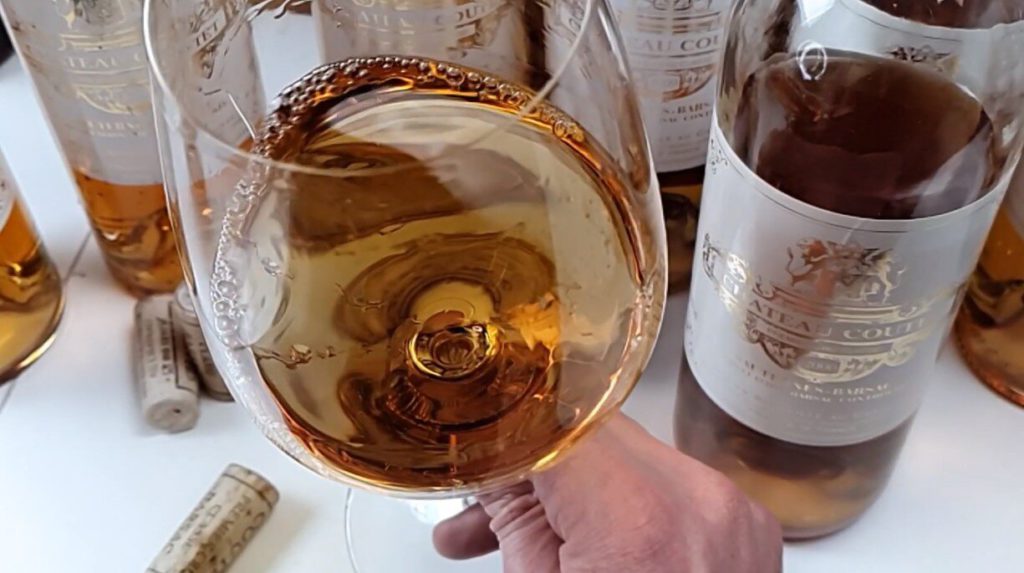Julien Miquel
Chief Wine Officer, Alti Wine Exchange
We’re continuing our round-up tour of the investment-grade wines with round 3 of our 4-part series covering the essentials of the great Bordeaux wines. (Here you have parts 1 and 2.)
Here are the key facts that you need to know about the incredibly age-worthy and fantastically complex sweet wines made in Sauternes, outstanding wines made thanks to a fungus that we love to call noble rot.
How are these wines made and how does it explain that they are so special and so thought-after?
Let’s talk about this and discuss which are the top estates and Chateaus, as listed in the 1855 classification.
Learn about the Sauternes Wines in Video
Where is Sauternes?
When one thinks Bordeaux wine, one often mainly thinks of prestigious red wines made from Cabernet Sauvignon and Merlot.
Some connoisseurs who know their wine will also think of some delicious white wines as well, made from the local white blend of Sauvignon Blanc and Semillon.
But Bordeaux has also, for centuries now, been reputable for producing some of the most extraordinary sweet wines on Earth. Sauternes wines and Bordeaux aren’t always naturally associated, but the Sauternes appellation is well and truly part of the Bordeaux wine region, located just South of the Graves, around the little town called Sauternes it is named after, some 30 miles from the city of Bordeaux.
The area also counts with another couple of lesser-known locale or towns, Cérons and Barsac, the latter of which is the most reputable one. Barsac is also quite a strong name, often associated with Sauternes on wine labels: Sauternes-Barsac.
Château d’Yquem in Sauternes, Bordeaux
What type of wine is Sauternes?
Sauternes are sweet white wines, generally called dessert wines.
But they are not fortified wines like Port wines are or some fortified sweet Muscat wines – meaning that no alcohol is added to stop the fermentation. They are naturally very sweet wines that are fermented just like any other wine. They are so sweet and concentrated that the yeasts can’t ferment all of the sugar. There is a large amount of residual sugars after fermentation, hence Sauternes wines being sweet.
More than the sugar content, the outstanding feature of Sauternes wines is their outstanding aromatic concentration.
Sauternes boasts incredibly intense notes of honey and blond caramel as the backbone of their flavor profile. They also feature striking aromas of rich and sweet tropical fruit, like dried pineapple and mango, juicy litchi, dried apricot and fig, raisin and sultanas as well as (for the best examples) some delicate floral tones of lily and elder-flower.
This already unique tasting experience is deepened and amplified by the long maturation in oak that they go through at the winery, adding depth of sweet spices, cinnamon, licorice, nutmeg and fennel seeds. Quite a sensation…
Julien Miquel at Chateau d’Yquem
How is Sauternes made?
This is really what explains it all, the magic, the concentration, the age-worthiness: how Sauternes is made.
The specific area of the Bordeaux region around the village of Sauternes is at a crossing of two rivers, the Garonne and the Ciron, which makes this area particularly humid and favorable to the development of a fungus, of a rot that loves eating grapes. The Botrytis fungus.
But because this area has both a lot of humidity together with rather cool climatic conditions in the morning and dry weather in the afternoons, especially before harvest, the fungus can’t just eat the whole grapes. It only develops under the grape’s skin, forming what we call the ‘noble rot’.
This phenomenon allows the water from the grapes to evaporate, and the sugars and flavors to concentrate greatly.
The results are almost shriveled berries that are very ripe and very concentrated. This natural phenomenon uniquely makes the grapes both very concentrated and very fruity.
Raisin juice wouldn’t taste very interesting and would feel rather heavy on the palate. Sauternes is more magical than this. You get both the lively fresh fruit flavors as well as a raisin-like concentration.
Finding such a spot on Earth that allows to have this noble rot developing without the grape completely rotting is actually very rare. Sauternes has got it.
This is what makes it so unique, so rare.
